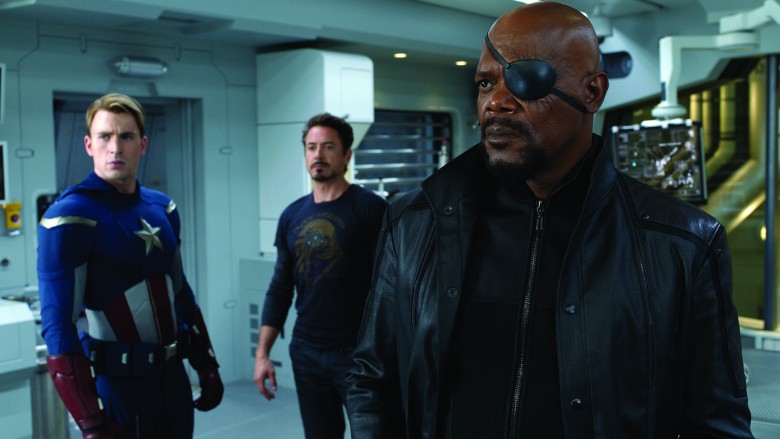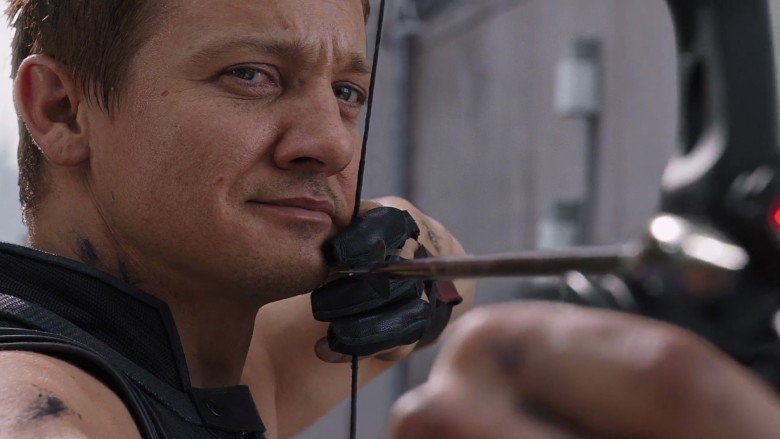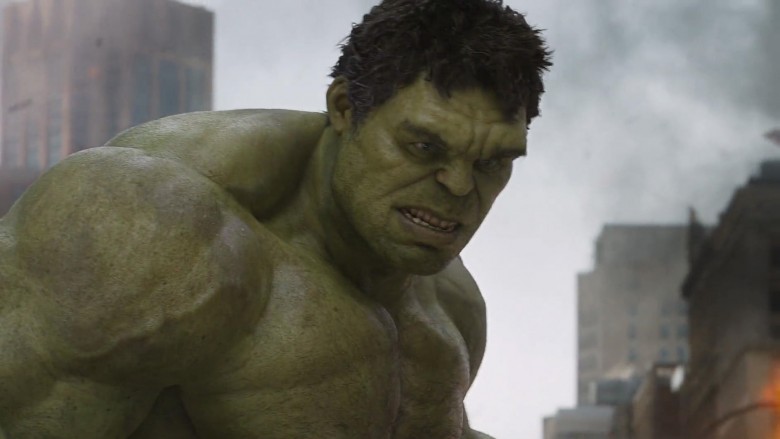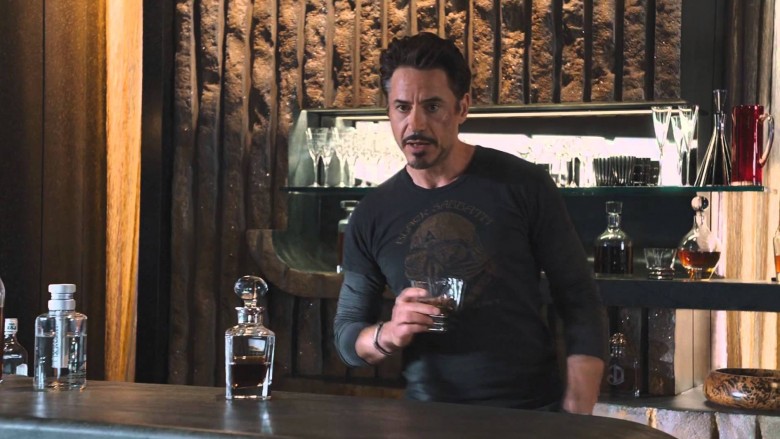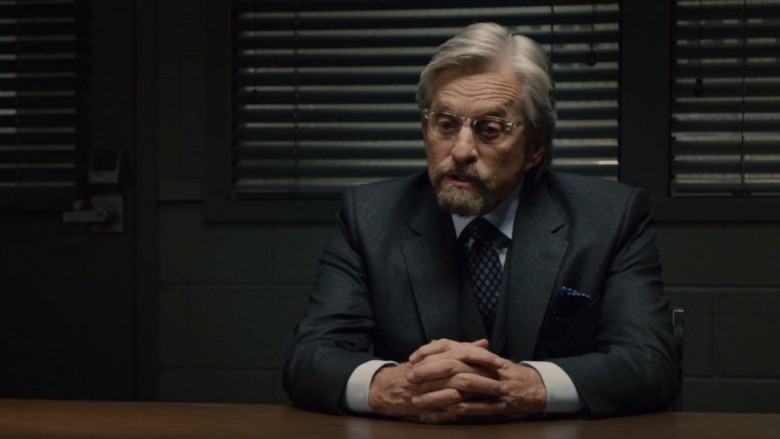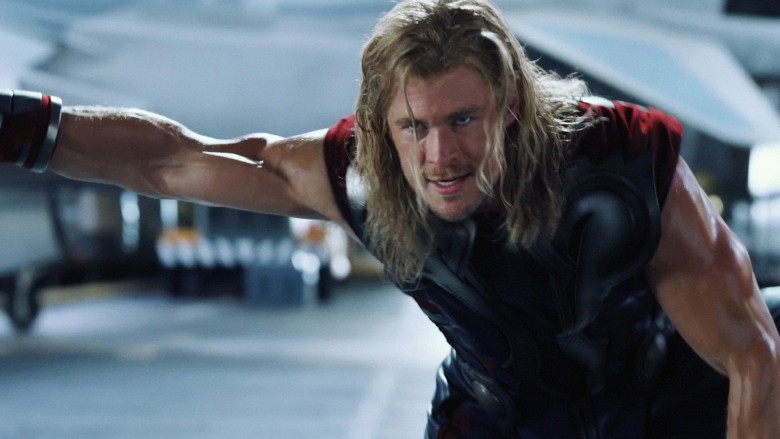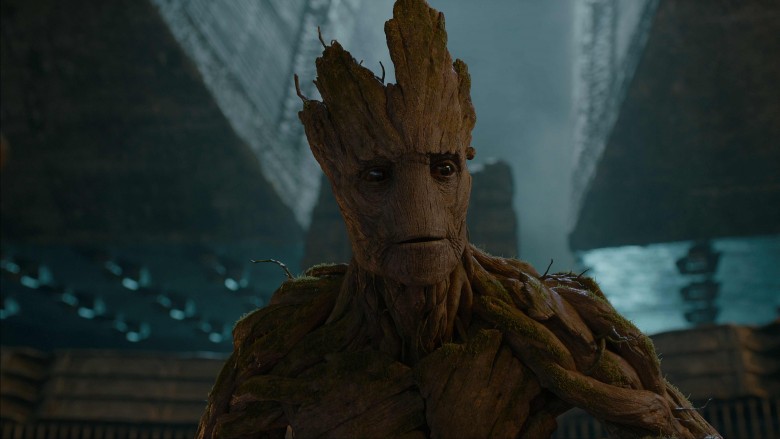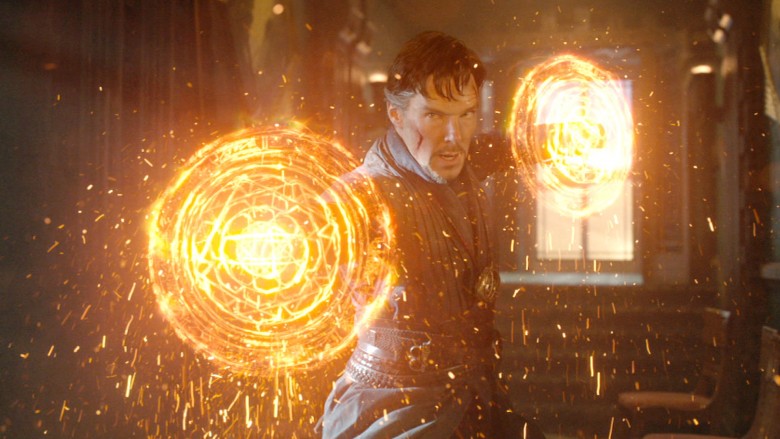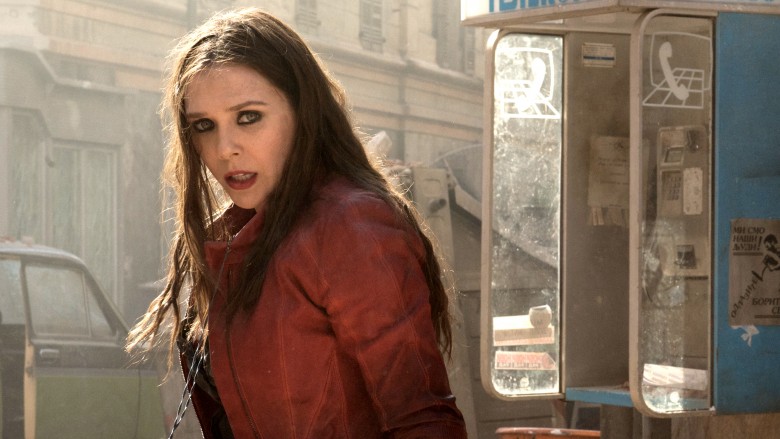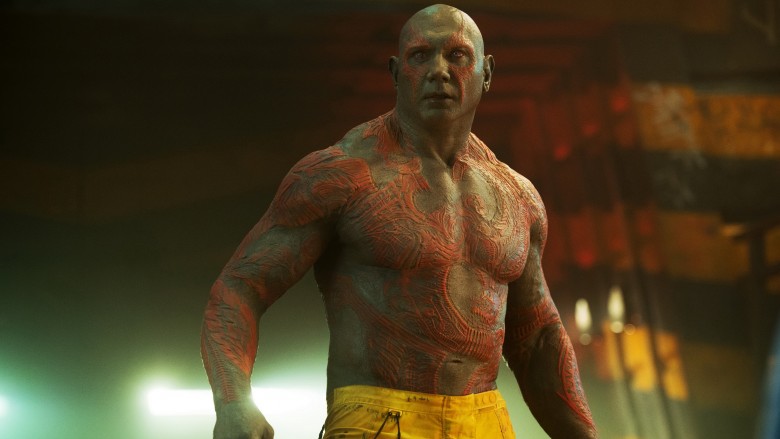Major Marvel Character Flaws That Were Conveniently Forgotten For The MCU
Portraying beloved comic book characters on the silver screen is always a challenge. Filmmakers must balance the need to create faithful adaptations for loyal readers with the desire to create something fresh and dynamic. By and large, the Marvel Cinematic Universe (MCU) has managed to walk this very fine line, making hardcore comic fans happy with loose adaptations of characters and storylines that still leave ample room for surprise and wonder. However, part of this adaptation process (and an inevitable byproduct of everything now being controlled by Disney) is that the rougher edges have been sanded off these heroes. In fact, many of these popular characters have really dark secrets that end up being entirely ignored in the MCU. If you'd like to peek behind the curtain and see what Disney has been hiding, then it's time to check out the major Marvel character flaws conveniently forgotten by the House of Mouse.
Nick Fury is willing to kill teammates
Hey, if you earn your living as a master spy, then you're probably a sneaky sort of guy. So props to the MCU for portraying Nick Fury as an underhanded manipulator. For example, he's not afraid to fake Agent Coulson's blood on some trading cards in order to trick the Avengers into action. And right up until Hydra took over, he had no objection with using a specialized database and heavily armed helicarriers to preemptively eliminate anyone threatening the safety of the world. However, the movies do consistently portray Fury as having his team's best interests at heart. In the comics, though, Fury isn't afraid to murder those very same teammates in order to get the job done.
Much of the MCU, especially the earlier movies, takes its inspiration from the Ultimate Marvel comics. These stories provided an opportunity for Marvel to retell the origins and adventures of their most famous heroes in a parallel universe, allowing new readers to hop on board without the baggage of continuity. One of the more interesting changes in the Ultimate comics involves Nick Fury. First, the normally-Caucasian spy was turned into a black man, one who was modeled after Samuel L Jackson. (Amazingly, this was years before the MCU existed.) Secondly, Ultimate Nick Fury is rather brutal. At one point, he tries to force an unwilling Bruce Banner to transform into the Hulk by letting soldiers beat the crap out of him. When that fails, he authorizes them to throw Banner from a helicopter, assuming that Banner will change before he hits the ground. It turns out he was right, and the transformed Hulk helps fight off an alien invasion. But still, that doesn't change the fact that Fury nearly murdered a teammate on little more than a hunch.
Hawkeye was a criminal
One of the weirdest things about the first Avengers movie is how much bad luck Hawkeye suffers throughout the film. Loki takes control of his mind very early on, and the archer spends a good chunk of his screen time being a bad guy. However, the movie does make it very clear that, when he's not a mindless zombie under the influence of a vengeful god, Hawkeye is a good, upstanding man. This concept is reinforced in Avengers: Age of Ultron, where we learn that Hawkeye is secretly a family man. Of course, both movies totally gloss over the fact that Hawkeye was once a criminal.
It all started with a simple case of mistaken identity. After throwing on some purple spandex and stopping some jewelry thieves, Clint Barton was immediately mistaken for a crook himself, possibly because so many villains in the Marvel universe are running around with purple outfits. Eventually, he ends up fighting Iron Man and hooking up with Black Widow. At the time, Black Widow was still very much a Soviet spy, and she convinces Hawkeye to help her out with industrial espionage and sabotage. Hawkeye wises up soon enough, and before long, both he and Natasha Romanoff would be fighting on the side of the angels. However, each of them has to deal with a shady past, and perhaps it's time for the MCU to take the pressure off Black Widow and shine the spotlight on Hawkeye's sins.
Hulk is a mass murderer
Poor Bruce Banner. All he wanted to do was study gamma radiation, and now he periodically transforms into an unstoppable monster fueled by rage. But we love the big green guy anyway, probably because the MCU has been very careful to portray that rage being directed at characters who "deserve it." Few moviegoers shed any tears when Hulk batters the Abomination. Similarly, when Hulk is tearing apart murderous alien invaders or killer Ultron clones, he's clearly a hero in his own "Hulk Smash" kind of way. But with the exception of one scene in Avengers: Age of Ultron, we rarely see the dark side of Hulk's anger. The Hulk of the comic books, however, is actually a mass murderer.
In one previous comic, it's established that a Hulk rampage in Las Vegas resulted in the death of 26 humans and one dog. This devastating incident eventually convinced some of the other heroes to launch Hulk into space. But things get even worse in the Ultimate universe, where a Hulk attack in New York costs hundreds of lives and results in the character being tried and sentenced for mass murder. Thankfully, the MCU wisely decided to skip all that blood and gore. Besides, who really wants to see Mark Ruffalo morph into a green version of Charles Manson?
Iron Man is an alcoholic
There's no denying that Tony Stark is the most flawed character in the MCU. He's brash, egotistical, and prone to building murder bots. The man is also an, ahem, exuberant social drinker. He drinks with Rhodes on an early morning flight. He drinks after presenting his Jericho missile to the military. He even pours himself a glass when confronting Loki. But while the character clearly enjoys his booze, this isn't really presented as a problem. The only time things get a little unsettling is when he drunkenly challenges Rhodey to a fight in Iron Man 2. Still, we all know his dangerous party antics are due to his fear of imminent death. But while the movies generally give Tony a pass, he's a major alcoholic in the comics.
This was made clear in the somewhat-infamous story "Demon in a Bottle." That particular tale dealt with Stark's struggle against rival Justin Hammer. As the story unfolds, Hammer finds a way to take control of Tony's armor. He then uses his newfound powers to make Iron Man look bad by crashing the superhero into buildings, killing an ambassador inside the United Nations HQ. Stark later clears his name and discovers Hammer is behind everything, but all the stress from the incident drives Stark to the bottle, eventually forcing the hero to admit he's an alcoholic. It's a far cry from what we've seen on screen, and if Iron Man 3 director Shane Black is correct, chances are pretty slim that we'll ever see Iron Man: The Lost Weekend. And really, that's just fine with us.
Hank Pym is a wife-beater
When Ant-Man hit theaters in 2015, many comic fans were surprised with how the movie portrayed Hank Pym. Played by Michael Douglas, Pym is presented as an older superhero who once fought in the Cold War. Unfortunately, Pym's life went into a tailspin when his wife, Janet van Dyne (the original Wasp), vanished into the Quantum Realm after an attempt to disable a Soviet missile went horribly wrong. Because of this tragedy, Pym is depicted as an overprotective father and a grieving spouse, one who's toiled for countless hours to find his wife. In short, Pym is presented as the ultimate loving husband...which is a gigantic departure from the comics where the original Ant-Man is actually a wife-beater.
It all starts when the Avengers decide to put Pym on trial. The group considers kicking him off the team because of his lack of control during combat. Being a genius problem solver, Pym decides to build an enemy robot that only he knows how to defeat, thus proving the Avengers actually need him. The plan is clearly insane, and when the Wasp tries to straighten him out, he ends up backhanding his wife across the face. Interestingly, writer Jim Shooter intended the slap to be accidental, but artist Bob Hall drew it as intentional and violent. Ever since, Hank Pym has had a pretty rotten reputation. This even plays out in the Ultimate universe, where Pym sprays his shrunken wife with a can of Raid and then commands an army of ants to kill her. In other words, Pym ain't exactly husband of the year.
Thor once took over the world
In the MCU, Thor gets his one and only character arc out of the way in his very first movie. Specifically, he learns about the dangers of holding himself above others instead of understanding those around him. In fact, he learns this lesson so thoroughly that, by the time we see him again in The Avengers, he's chiding Loki for missing "the truth of ruling." Sure, it works as a noble superhero sentiment, rooted in the idea that Thor would never consider others inferior. Of course, this ignores that time the god of thunder decided to conquer Earth.
In one memorable comic, it appears that Odin is dead, and Thor finally ascends to the throne of Asgard. After running the show for a bit, he decides it's time for a more "hands-on" approach with humanity, so he brings Asgard down to Earth. As you might expect, this didn't sit well with the mortals, and eventually, everybody from Captain America to Joe Schmo declares war on Thor. But the god of thunder isn't too keen on rebellions, and he wastes no time throwing the Avengers into prison. He then eliminates technology on Earth and forces everyone to follow Norse religious beliefs. Fortunately, all of his plans are undone via the power of time travel, but it still goes to show that comic book Thor isn't quite as friendly as Chris Hemsworth.
Groot tried to conquer Earth
When the first Guardians of the Galaxy movie exploded onto the scene, it took almost everyone by surprise. In addition to the rollicking, nostalgia-powered soundtrack, the movie was carried by its eccentric cast of characters. And while audiences loved to drool over hunky Chris Pratt and laugh at the sarcastic wit of Rocket Raccoon, it was Groot who stole the show. He's a walking, talking tree that communicates only by saying, "I am Groot." On top of that, he's the heart and soul of the team, going so far as to sacrifice himself to save his friends, all before returning in miniature, toy-friendly form. Seriously, what's not to love about this guy? However, when Groot was introduced in the comics, he was actually an evil invader who just wouldn't shut up.
When Groot was first introduced in Tales to Astonish , he was an oversized plant who said way more than three words. And in the classic villain tradition, he wanted to conquer the Earth. He was eventually defeated by termites (don't ask), and then reappeared a few times in his old-school form before being redesigned and recruited into the Guardians of the Galaxy. Since then, he's mostly fought the forces of evil, but still, it's strange to think there was a time when Groot and Loki had the same "take over the world" item on their to-do lists.
Doctor Strange relies on dark magic
Doctor Strange was a bona fide hit when he debuted in the Marvel Cinematic Universe. While some weren't sure if audiences were ready to appreciate large doses of magic and sorcery injected into a franchise dominated by science and technology, Stephen Strange's unique powers proved incredibly engaging. However, there were some interesting differences between the movie and the source material. For example, in the film, one of the main plot threads concerned Strange's unwillingness to use dark magic in his battle against evil. So understandably, he feels betrayed when he discovers his mentor, the Ancient One, has been using the Dark Dimension's energy to prolong her own life. But for comic book fans, this was an unusual high horse for Strange to saddle because the Doctor is no newbie when it comes to black magic.
In the comics, Doctor Strange has both removed himself from the New Avengers team and lost the title of Sorcerer Supreme because of his dependence on dark magic. He was eventually restored to his Supreme title, but more disturbing revelations came about later on. Specifically, it's eventually revealed that Doctor Strange created a magical being whose entire purpose was to soak up the pain and suffering that black magic use would normally wreak on Strange's body. In true comic fashion, the creature gets loose and becomes a monstrous new villain...and an ongoing reminder of Strange's hypocrisy.
Scarlet Witch has rewritten all of reality
While Doctor Strange was impressive in its scope, the movie wasn't Marvel's first foray into the mystical. In addition to showcasing Asgardian magic, the MCU has featured Scarlet Witch and her ability to alter the probabilities of certain events. If that sounds deliberately vague, well, that's because it probably is. More than most other characters, Scarlet Witch gives writers an excuse to use all sorts of crazy spells to speed the plot along. This ranges from mind control to telekinesis. For example, in Captain America: Civil War, Scarlet Witch uses her powers to stop an explosion...although things majorly backfire when her good intentions get people killed. While it's debatable how much we should blame her for the incident, the movie implies that she simply needs more training, but that sort of ignores the fact that Wanda Maximoff is a threat to all reality.
In the comics, Scarlet Witch once created an alternate reality, later referred to the as the "House of M." This was a new realm where mutants dominated the Earth and, in turn, were ruled by her father, Magneto. As you might expect, things eventually get out of hand, and Magneto kills her brother, Quicksilver. Scarlet Witch then determines that Magneto focuses too much on other mutants and not enough on his family, so she utters three simple words: "No more mutants." And just like that, time and reality are reversed, stripping the powers from the planet's mutant population. In the blink of an eye, Scarlet Witch warped all of reality to her own desires...twice! Suddenly, losing control of an explosion doesn't seem so bad.
Drax tried to kill his daughter
One of the most surprisingly emotional stories from the Guardians of the Galaxy movie belonged to Drax. When the character is introduced, he looks like he might just be a vicious killer. However, the movie reveals that his entire family was slaughtered by Ronan the Accuser, giving Drax a highly personal stake in the mission to stop the crazy Kree terrorist. That's why it's so satisfying when Drax finally gets his revenge. But as you've probably guessed by now, the Drax of the comics had a much more, uh, complex relationship with his family. For instance, Drax once tried to kill his own daughter.
Drax's daughter, Moondragon, was raised by Thanos and taught skills in physical combat and mental manipulation. That's a pretty key detail to remember, considering Moondragon once used her mind powers to take over an entire planet. Drax then brought the Avengers to stop his spawn, but when peaceful methods didn't pan out, he tried to end her life, forcing Moondragon to kill her dad with her psychic abilities. Now, while most would argue that Drax was in the right, the point still remains that our super-literal friend isn't afraid of committing a little filicide. Let's hope they keep Dave Bautista's version a bit more family friendly.

